|
By Faye Charpentier, History Program Director
0 Comments
By Faye Charpentier, History Program Director
Over the course of several hours and with the help of many hands from these dedicated volunteers, Christmastime has arrived at King’s Chapel. While “greening” for the holidays is now a fairly commonplace tradition throughout the United States not just at churches but at office buildings, banks, coffee shops and restaurants, and homes, this was not always the case. Shortly after King’s Chapel was founded in Boston in 1686, it was the first, and likely one of the only, buildings in New England, let alone Boston, to be decked out in greenery each December. As explored in further detail in a virtual program presented this year, Christmas was not widely celebrated in colonial New England, primarily due to religious and cultural differences between the several sects of Christian colonists. This is not to say that New Englanders had not previously celebrated Christmas until 1686, but rather that the establishment of King’s Chapel as the state-sponsored English church brought the first large scale and organized Christmas observances to the region. By the 1690s, King’s Chapel and its members were partaking in one of the oldest known traditions associated with the holiday: greening.
By Faye Charpentier, History Program Director 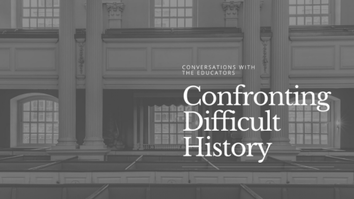 On June 11, King’s Chapel History Program staff, King’s Chapel clergy, and congregants engaged in an important conversation about the importance of confronting difficult history. This event was part of a larger conversation about the role and relevance of history to our present moment. As we look towards current events these past few weeks, the difficult histories of both our nation and this church have weighed on many of our minds. The systemic racism, police brutality, and white supremacy in the world are all historically rooted. The study of these histories not only helps us understand how we got here, but can empower us to confront these issues head-on, and shape our anti-racism work today. A James Baldwin quotation from “Unnamable Objects, Unspeakable Crimes,” has been frequently shared on social media lately: The great force of history comes from the fact that we carry it within us, are unconsciously controlled by it in many ways, and history is literally present in all that we do. By Lily Nunno, Historic Site Educator From 1915 and into the early 1920s the interior of King’s Chapel went through a series of changes: the walls were repainted, new floors were put in, the pews were reupholstered, and the stained glass windows were removed. Like many other buildings in Boston and around the United States, the King’s Chapel interior was reimagined to reflect the Colonial Revival aesthetic. This often involved stripping away any Victorian decoration — like floral motifs— and replacing it with a cleaner and simpler look. This renewed interest in the aesthetics of the 18th century initially began with the Centennial celebration in 1876, similar to the fervor during the Bicentennial. This led to an increased desire to preserve colonial buildings and the homes of historical figures. The idea of historic preservation we are familiar with today was fairly new in the late 18th century. In previous decades, historical buildings — like the home of John Hancock in Boston — were torn down. However, these efforts were not necessarily historically accurate. Pale colors were used when reimagining interiors in the Colonial Revival style, though colonial interiors were often colorful. For example, the pilasters at King’s Chapel were faux pink marble and galley fronts were peach during the 18th century, but during the Colonial Revival redesign the interior of the church was whitewashed. This inaccurate view of the Colonial period extended beyond architecture and interior design. As the United States underwent changes, many white, upper-class, and Protestant Americans yearned for a past they saw as superior to their present. By Mitchell Bryan, Historic Site Educator As a society, we are drawn to the ancient, the historic, and the antique. Places and objects from long ago help us connect with and understand our past, but they also shape the present and inform our future. Although new construction constantly changes the face of our country, people are still driven to preserve history rather than abandon or destroy it. In the United States, historic preservation is conducted at the grassroots level. As a response to urban renewal and the destruction of historic buildings and sites nationwide, people now make the conscious decision every day to preserve places that are important to them, their families, and the broader communities in which they live. They are aided by laws and programs that ensure historic places are maintained for future generations. This is known as the Historic Preservation Movement.
By Christina Rewinski, Historic Site Educator  The red on this map denotes the area which burned in 1872, showing the devastating effect of the Great Fire on Boston. Image: Boston Fire Historical Society The red on this map denotes the area which burned in 1872, showing the devastating effect of the Great Fire on Boston. Image: Boston Fire Historical Society Fire is high on the list of threats to historic sites. All too frequently, horror stories of centuries-old buildings succumbing to flames make the news, and the public reacts with sadness at lost architectural treasures, as was the case when Notre Dame Cathedral in Paris caught fire in 2019. In November of 1872, Boston experienced tragedy as the largest fire in city history destroyed over 700 buildings. The fire was finally contained at the intersection of Washington and Milk Streets, mere blocks away from King’s Chapel. While this church remained unscathed, many neighboring historic sites burned, including Trinity Church, one of King’s Chapel’s daughter congregations. (The congregation of Trinity Church later moved from their Downtown Crossing location to a new building in Copley Square.) So it is extremely important for places like King’s Chapel to take every precaution available to protect their physical structures as well as all the people who visit. By Jennifer Roesch, History Program Assistant 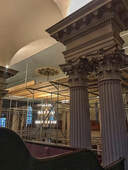 Scaffolding during 2020 Restoration Scaffolding during 2020 Restoration In a church that’s over 260 years old, restoration and preservation efforts are seemingly on-going. The most recent project happened earlier this year, luckily before the pandemic hit Boston in full-force. Starting in early January, John Canning & Co spent weeks giving the King’s Chapel ceiling a face-lift with new plaster and a fresh coat of paint. Thanks to the newly restored-ceiling, the chandelier that hangs in the center stands out. 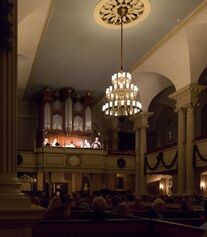 c. 1930 Chandelier during a recent Christmas Eve Service c. 1930 Chandelier during a recent Christmas Eve Service It may be surprising to some that the brass chandelier has adorned the chapel for less than one hundred years. This is quite unusual, especially since our daughter Anglican church, Old North Church, has had a candle-lit chandelier hanging in the center since the 1720s. While some partial gas lighting was installed at King's Chapel in the 1870s to the tops of the columns, the electrified chandelier was installed in the 1930s and became the chapel’s first centralized light source. The chandelier was designed by Smith & Walker, the architecture firm helping to restore the chapel at the time, and was built by Bigelow and Kennard, a local jewelry and clock making firm. 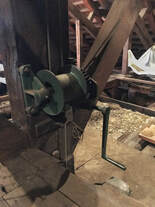 Crank for lifting and lowering the chandelier. Crank for lifting and lowering the chandelier. Records have yet to be found of major restoration efforts to the chandelier since it was hung. However, routine maintenance is required- such as polishing and dusting- which is no small feat. Large chandeliers hanging in high ceilings are impossible to light or clean with just a stool or ladder and often need a pulley system with a crank to lift and lower the entire light fixture. For the King’s Chapel chandelier, the crank is found in the attic. When the King’s Chapel Sexton (or caretaker) Clark Aikins dusted and polished the chandelier last fall, the History Program was able to record the process. This included a timelapse showing the chandelier being put back in place by Clark, who was up in the attic using the crank. The pictures of the lowered chandelier in between the center box pews also provide a unique, up-close view of the electrified light fixture. How does the up-close view change your perspective of the King’s Chapel chandelier? Or does it? Do you think the 1930s chandelier seems like it belongs in a chapel designed and built in the 18th century? As we continue our social media series for #PreservationMonth, our Educators will expose the many other layers of King’s Chapel’s building history, like Lily’s post today about the chandelier. Follow us on social media to learn more and test your knowledge by answering the trivia question in our Facebook and Instagram stories related to our post each day! Sources:
Clancy, Goody. Historic Structures Report for King’s Chapel in Boston. June 2006. In the first video of our new "Did You Know?" series, featuring lesser-known stories from King's Chapel's past, History Program Director Faye Charpentier discusses several aspects of the church's history and activities during World War II. By Jennifer Roesch, |
King's Chapel History ProgramDive deeper into King's Chapel's 337 year history on the History Program blog. Archives
July 2023
Categories
All
|
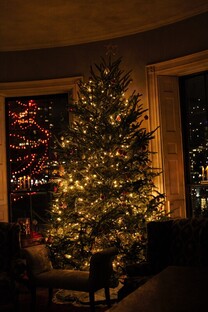
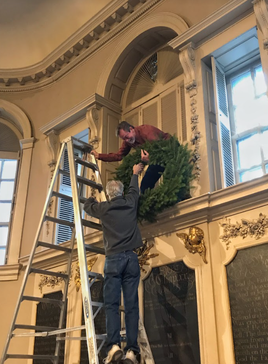
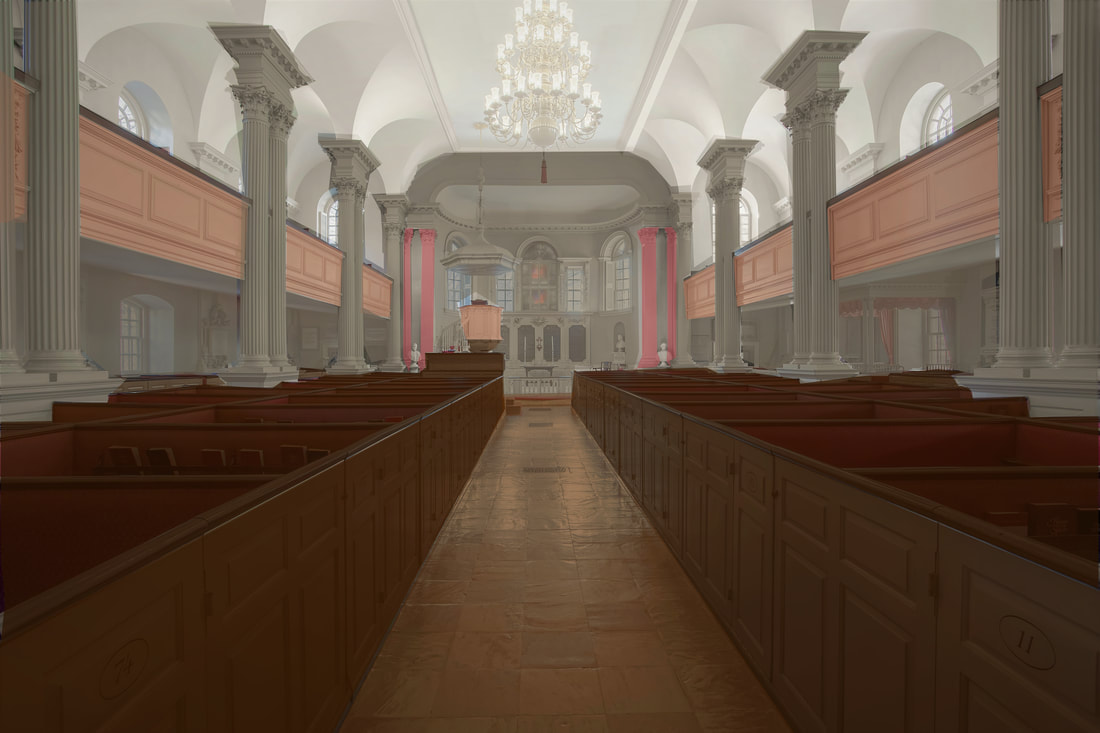
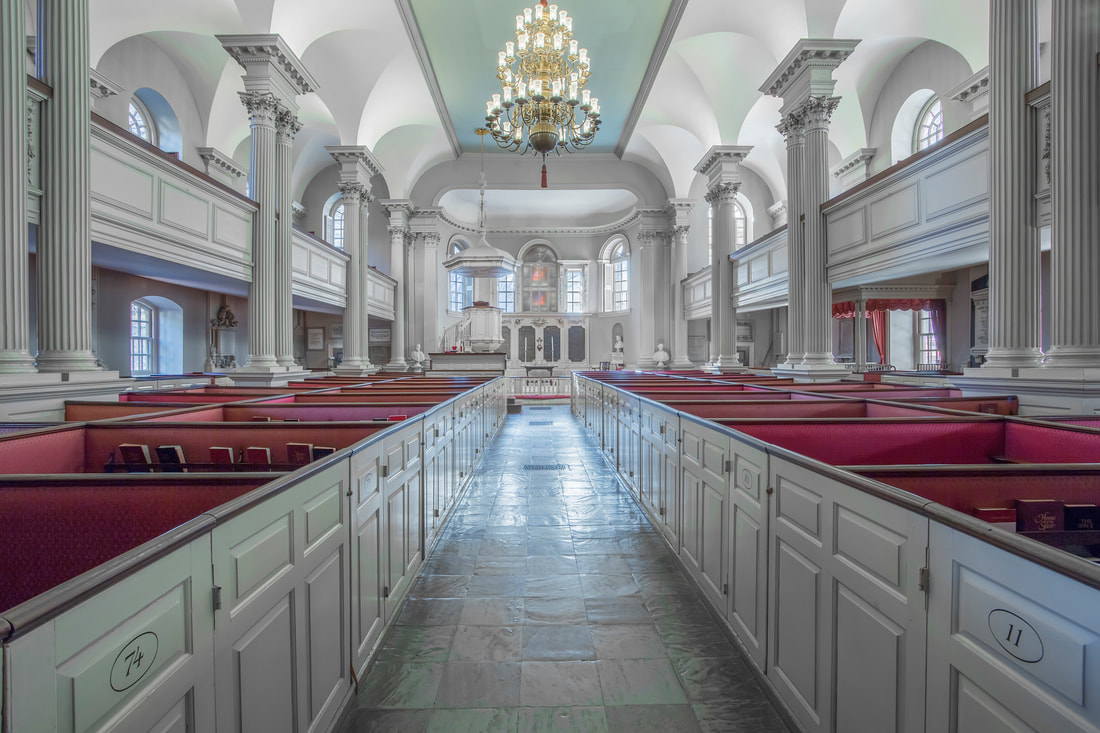


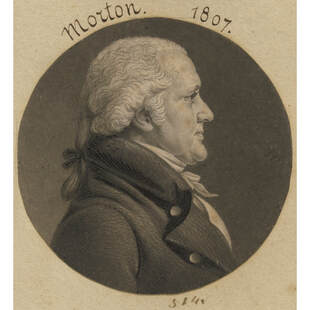
 RSS Feed
RSS Feed